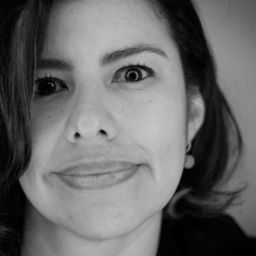11.30 Intercultural Meaning-Making: Visitor Encounters with Aztecs in Oceania
Mon statut pour la session
Museums produce international touring exhibitions to connect with international audiences and, in turn, host them to make globally significant cultural heritage available to local visitors. On the one hand, these exhibitions are promoted for their potential to advance cultural diplomacy and intercultural understanding; on the other, they have been critiqued as politically safe forms of national self-promotion that narrow our view of a nation or culture, rather than expanding or deepening it, potentially leading to cross-cultural misunderstanding and conflict. However, there has been very little research that empirically examines the visitor experience of international touring exhibitions.
This paper will explore the “heritage experiences” of museum visitors as part of a longitudinal, transnational investigation of a touring exhibition. “Aztecs: Conquest and Glory” was developed by Museum of New Zealand Te Papa Tongarewa (Te Papa) in collaboration with the Instituto Nacional de Antropología e Historia (INAH) in Mexico, as part of a partnership with two Australian museums. Between 2013 and 2015 it was exhibited at Te Papa, Melbourne Museum and Australian Museum in Sydney. Our detailed analysis will draw on fifty-seven post-visit qualitative interviews across the three venues, and twenty-five follow-up interviews several months after the visit. Our multi-venue, longitudinal approach enables a comparative analysis of visitor meaning-making over time, as well as across different institutional, cultural, and political contexts.
The focus of our analysis will be on how heritage is performed by the interpretive acts and meaning-making of visitors to this exhibition. In particular, we examine the intercultural moments and meanings produced by cross-cultural encounters within this “mobile contact zone.” These include expressions of curiosity, open-mindedness, empathy, respect and tolerance of ambiguity, as well as the processes of reconstructing the others’ frames of reference in order to “see through their eyes,” leading to reflection and an enhanced understanding of self. If such intercultural meaning-making is a goal of international touring exhibitions, what facilitates and what inhibits it? What kinds of transformation take place and how enduring and far-reaching is their impact? Do they lead to intercultural understanding and dialogue, or are they confined to the stereotypical and the superficial, reaffirming narratives of difference and otherness?
The findings demonstrate that different aspects of Aztec culture created different (and often opposing) impressions. By providing a “balanced” and “complete” view of Aztec culture through the inclusion of information about the everyday lives of Aztec people, the exhibition broadened preconceived understandings of Aztec culture. Some visitors were able to empathize with the Aztecs; a number of them connected with the cultural “other” through the emotions they experienced in their encounters with exhibition objects, props, and other interpretive and design elements, including the feeling of being able to imagine life “in the shoes” of the cultural “other.” This was despite the fact that a personalized or “humanized” perspective was largely lacking in the exhibition, an interpretive technique associated with an enhanced understanding and appreciation of another culture. Many participants shared preconceived negative impressions of modern-day Mexico, but some changed these impressions as a result of their visit to the exhibition, despite a relatively small amount of information about the contemporary relevance of Aztec culture. The impact of visitors’ sense of identity and prior knowledge on their meaning-making was also evident in the interviews. Finally, our findings demonstrate that months after their visit, participants were able to recount their experience in great detail, revealing that the meanings produced through intercultural heritage experiences can be long-lasting.
To theorize these experiences we will draw on the work of Schorch (2013, 2015), Smith (2015) and others who consider the performative, interpretive, and meaning-making dimensions of visitor engagement with heritage, in this case, the heritage of others. Our aim is to gain a deeper understanding and build a critical theory of intercultural heritage experiences facilitated by touring exhibitions.

